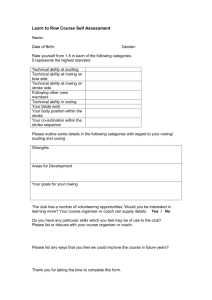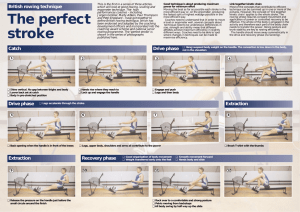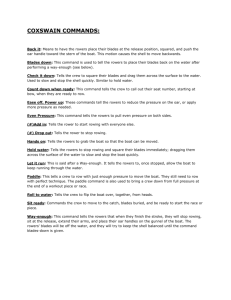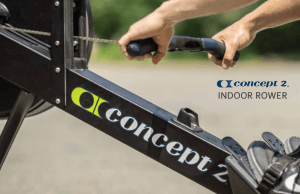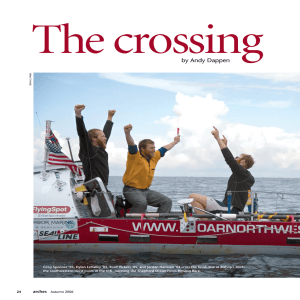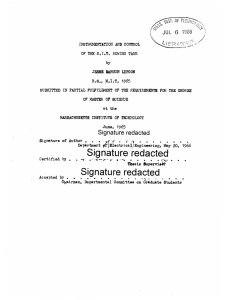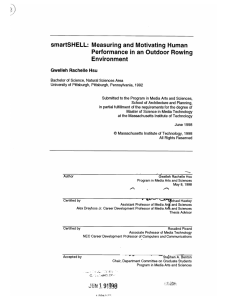Kellen Benchley - CCVI
advertisement
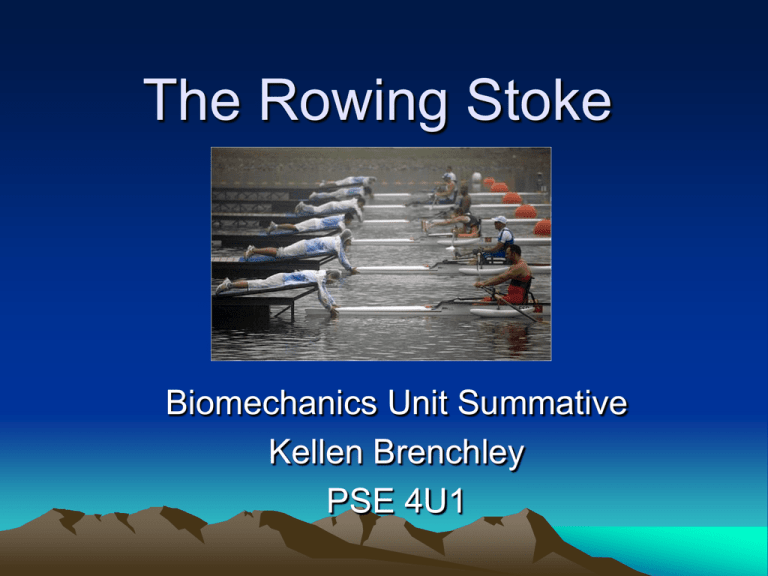
The Rowing Stoke Biomechanics Unit Summative Kellen Brenchley PSE 4U1 Focus Point: The Handle • When analyzing the rowing stroke we will be focused on the handle of the erg. • The handle is most important because when your in a boat the speed of the handle directly relates to the speed of your boat. Preliminary Movement • Since the stroke is a cycle we will start the movement at the catch. • Muscles involved: - Flexion of the phalanges - Contraction of gastrocnemius and soleus - Contraction of the hamstrings Critical Instant • The oar entering the water this is the critical instant, as this if the moment when the force is applied. • The muscles begin to contract explosively and this begins the stroke. • Muscles involved: - Rhomboids - Quadriceps - Hamstrings - Gastrocnemius - Soleus Force Producing Movement • The force producing movement in the rowing stroke is the drive. • This uses all the major joints in the body from largest to smallest, creating the maximum velocity and force. • Muscles involved: - Trapezius - Hamstrings - Deltoids - Gastrocnemius - Triceps - Soleus - Rhomboids -Quadriceps - Pectoralis Major - Wrist Extensors and Flexors - Rectus Abdominus - Gluteus Recovery/Follow-through/Backswing • The rowing stroke has two main components, the drive and the recovery. The recovery, the follow-through and the backswing are all part of the recovery. • Muscles involved: - Deltiods - Hamstings - Triceps - Quadriceps - Biceps - Pectoralis Major - Rectus Abdominus - Internal and External Obliques - Wrist extensors and flexors Planes and Axis Used • A rower always moves in a straight line. When the boat is moving through the water and when the rower is moving up and down the slide he will aways be moving through the sagittal plane. • The rower might tip from side to side if s/he is unbalenced this would be movement through the frontal plane • The axes used is that of the antereoposterior axes. The rotation occours in the hip joint and in knee joint Levers • The main lever used in the rowing stroke is that of the oar in the water, this is a first class lever. Free Body Diagrams Velocity and Acceleration Logger Pro Graph 7 Principles Biomechanics • Five of the seven priciples are used in the rowing stroke • Stability – Keeping the boat steady and level. • Maximum Effort – Joints used: Ankle, knee, hip and shoulder • Linear Motion 1 – Pulling the oar through the water, the harder you pull the faster you go • Linear Motion 2 – The movent occours because of the high force applied to the oar.This force results in movement in the opposite direction • Angular motion – In order to have a powerful stroke you must swing through your hips. Newton's Laws • The Law of Inertia - - Objects that are in motion tend to stay in motion unles an external force is applied to it Eg. The force from the oars move boat, but water apposes the movement of the boat • The Law of Acceleration - A force applied to a body causes an acceleration of that body of a magnitude proportional to the force, in the direction of the force, and inversely proportional to the body’s mass Eg. The harder you pull the oar the faster you can move the boat • The Law of Reaction - For every action there is an equal and opposite reaction. Eg. Push the water with your oars and the water pushes back just as hard. Final Analysis • - Tecnical improvements from the Video Explode out of the catch More lay-back Straighter back
